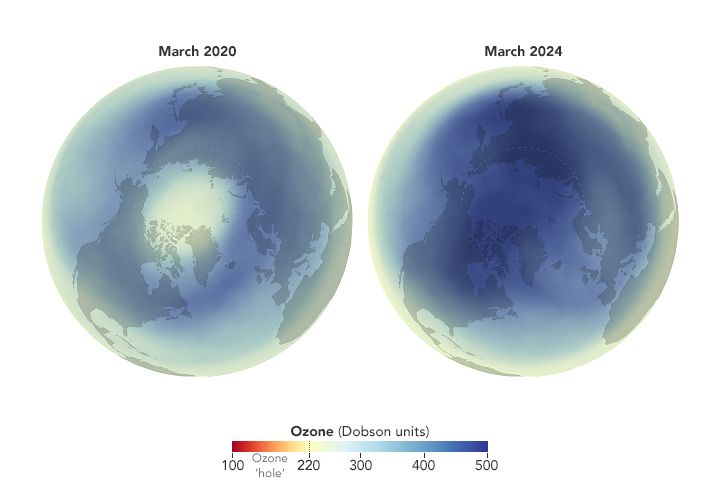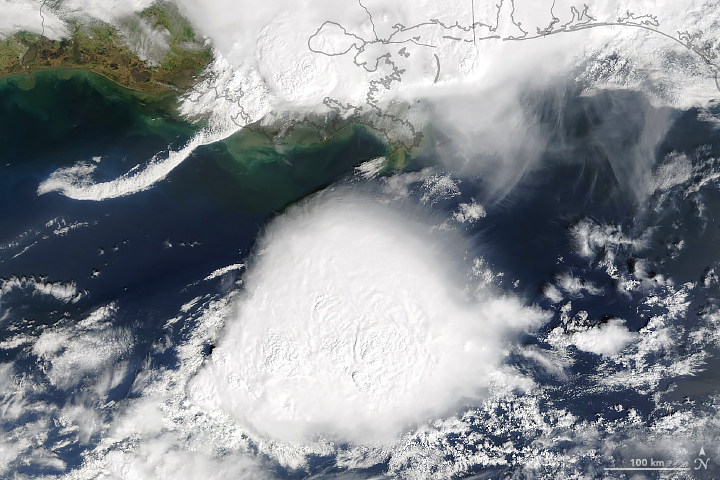- Home
- Missions
- Data
- Communications
- People
- The Earth Observer Newsletter




Recent Imagery
You will be directed to the NASA Visible Earth webpage when you select Images by Mission below, or click on the images at right that are randomly generated to represent four out of all possible topics.
You are here
Missions: Historical Missions
Current and future Earth observing missions are the descendants of satellites first launched over 40 years ago (the low Earth orbit Television Infrared Observation Satellite, TIROS-1, was launched on April 1, 1960).
In the early 1970s, modern land surface satellite observations were pioneered with the launch of the first in a series of Landsat satellites developed by NASA and operated by USGS. Passive-microwave imaging began in late 1972 with the launch of NASA's Nimbus 5 satellite and proved highly effective in monitoring the global sea ice cover as well as other Earth variables. Early ocean color observations began in late 1970s with the Coastal Zone Color Scanner (CZCS) instrument on the NASA-developed Nimbus 7 satellite. Nimbus 7 also carried the first Total Ozone Mapping Spectrometer (TOMS). Quantitative atmospheric observations from space began with the launch of the first TIROS-N satellite on October 13, 1978. This was an experimental satellite developed by NASA and operated by NOAA. The satellite carried a 4-channel Advanced Very High Resolution Radiometer (AVHRR) and an atmospheric sounding system (TOVS – TIROS Operational Vertical Sounder). NASA has also overseen the development of the geosynchronous (GEOS) series of weather satellites that began in the mid 1970s.
These early Earth observing satellites had the capability to measure much of what we continue to study today, such as land, ocean, clouds, trace gases, and radiation. Early satellites paved the way for increased instrument sophistication and improved data collection. While previous Earth observing satellites have led to our unprecedented understanding of the Earth’s climate and weather, scientists still have many questions about the details and interactions of the Earth’s systems.
Scientists are using data from NASA’s latest series of satellites to further examine the physical and chemical processes of land, ocean, atmosphere, and cryosphere. In addition to allowing for a better understanding of climate and climate change, these missions have applications in understanding weather patterns, growing seasons, sea level variation, fresh water availability, and other geophysical societal concerns. Scientists can contribute this information to help attempt to develop solutions that reduce and/or help humans adapt to climate change.
| Mission | Mission Category | Status | |
|---|---|---|---|
 |
Applications Technology Satellite (ATS) | Completed | |
 |
Combined Release and Radiation Effects Satellite (CRRES) | Completed | |
 |
Dynamics Explorer 1 (DE 1) | Completed | |
 |
Dynamics Explorer 2 (DE 2) | Completed | |
 |
Earth Radiation Budget Satellite (ERBS) | Completed | |
 |
Environmental Science Services Administration (ESSA) | Completed | |
 |
European Remote Sensing (ERS-1) | Completed | |
 |
GEOdetic SATellite (GEOSAT) | Completed | |
 |
Marine Observation Satellite (MOS-1) | Completed | |
 |
Modular Optoelectronic Multispectral Scanner (MOMS) | Completed |
